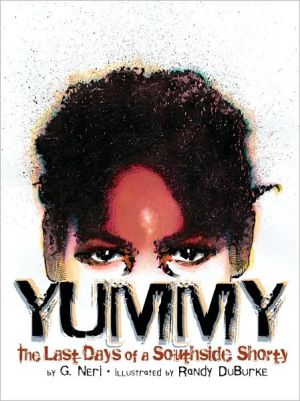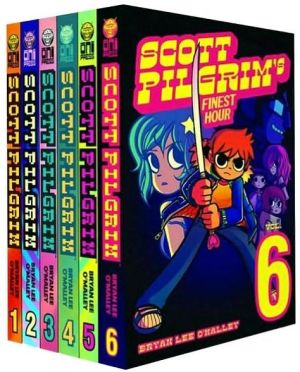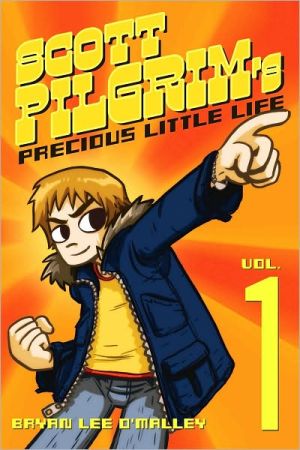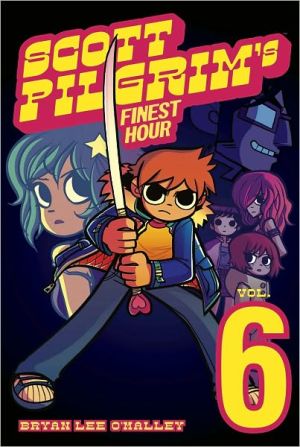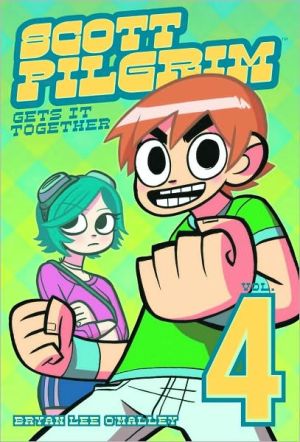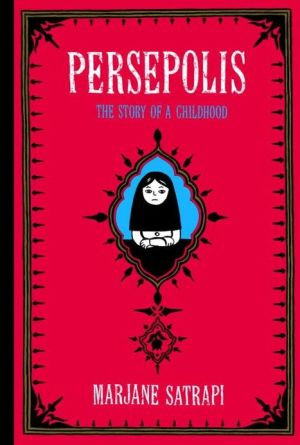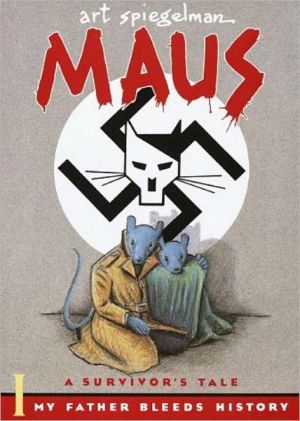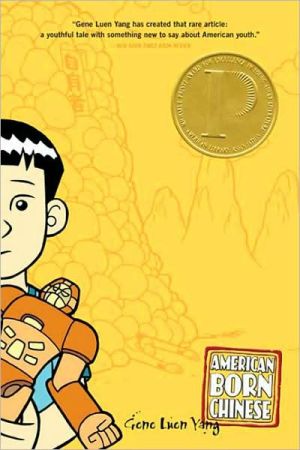Yummy: The Last Days of a Southside Shorty
A 2011 Coretta Scott King Author Honor Book\ Eleven-year-old Roger is trying to make sense of his classmate Robert "Yummy" Sandifer's death, but first he has to make sense of Yummy's life. Yummy could be as tough as a pit bull sometimes. Other times he was as sweet as the sugary treats he loved to eat. Was Yummy some sort of monster, or just another kid?\ As Roger searches for the truth, he finds more and more questions. How did Yummy end up in so much trouble? Did he really kill someone? And...
Search in google:
\ Publishers WeeklyIn 1994, in the Roseland neighborhood of Chicago's South Side, a 14-year-old girl named Shavon Dean was killed by a stray bullet during a gang shooting. Her killer, Robert "Yummy" Sandifer, was 11 years old. Neri recounts Yummy's three days on the run from police (and, eventually, his own gang) through the eyes of Roger, a fictional classmate of Yummy's. Roger grapples with the unanswerable questions behind Yummy's situation, with the whys and hows of a failed system, a crime-riddled neighborhood, and a neglected community. How could a smiling boy, who carried a teddy bear and got his nickname from his love of sweets, also be an arsonist, an extortionist, a murderer? Yet as Roger mulls reasons, from absentee parenting to the allure of gang membership, our picture of Yummy only becomes more obscure. Neri's straightforward, unadorned prose is the perfect complement to DuBurke's stark black-and-white inks; great slabs of shadow and masterfully rendered faces breathe real, tragic life into the players. Like Roger, in the end readers are left with troubling questions and, perhaps, one powerful answer: that they can choose to do everything in their power to ensure that no one shares Yummy's terrible fate. (Aug.)\ \ \ \ \ VOYA - Jan Chapman\ This graphic novel is based on the heartbreaking true story of lives wasted in Southside Chicago during a gang-related slaying in 1994. Robert "Yummy" Sandifer is just eleven when he shoots and kills an innocent bystander during a territorial gang dispute. His story is told by a fictional classmate, Roger, who is trying to make sense of what happened. Yummy's childhood is an all-too-common story of parental neglect and abuse. The only family he knows is his gang, The Black Disciples, and he will do anything they ask of him. Yummy still clings to vestiges of his childhood, particularly his beloved teddy bear, but this child also carries a gun for a ruthless gang, which in turn will sacrifice him when the public outcry becomes too great. Told in stark panels of black and white, this stunning graphic novel tells the tragedy of Yummy but also indicts a society where there is only an outcry against the endless cycle of violence when one particular horrific incident captures the imagination of the community. The powerful artwork, full of shadows and deep contrast, emphasizes this terrible story of wasted childhood and senseless murder. The narrative, simply told and conveying a young boy's anguish, complements the artwork perfectly. Teens who enjoy standalone graphic novels will be drawn to the compelling story and art, and moved by the tragic unfolding of events. This novel would also be an excellent resource for a classroom discussion on gang violence. Reviewer: Jan Chapman\ \ \ Children's LiteratureBased on the real-life story of Robert "Yummy" Sandifer, an eleven-year-old boy who became a poster child for youth gang violence after murdering a fourteen-year-old girl, Yummy: The Last Days of a Southside Shorty challenges readers to form their own understanding of gang violence. Using a fictitious eleven-year-old as a narrator, Neri gives readers a look at "Yummy's" early days as an abused child who took to stealing and carjacking before being inducted into "The Black Disciples," a Chicago gang that used underage "Shorties" to commit crimes for older members. They will see Yummy from the perspective of his grandmother, friends, and media reporters. And they will read about how Yummy's crime eventually made him an enemy of more than just the police., Neri tries to make Yummy more than just a morality tale by depicting Yummy as an ignorant and insecure child rather than a remorseless killer (although Neri admits in an author's note that this depiction is based as much on speculation as it is on research). Ultimately, the graphic novel is most effective as a cautionary tale about how ignorance and a toxic environment can lead to an entire community's pain and suffering. Reviewer: Michael Jung, PhD\ \ \ \ \ Library Journal"So young to kill, so young to die" read the 1994 Time magazine cover with Yummy's photo. Yummy was a real 11-year-old Chicago kid, with father in jail, abused by his mom, and sucked all-too-readily into the Black Disciples gang. "The disciples ain't stupid," comments a character in Neri's account. "They got this endless supply of young ones with no daddy, just looking for attention"—pit bull puppies who could escape felony convictions because of age. Given a gun and sent on small jobs, Yummy was a bundle of thug ego with a kid's immaturity, and he accidentally killed a teen girl bystander while threatening supposed rivals. Now a liability as a magnet for unwanted attention, Yummy was executed by his own gang. While Neri invents a fictional narrator as tour guide for the reader, the story is based on public records, media reports, and personal accounts. VERDICT Neri's re-creation paints a compelling and sympathetic portrait of how a youngster became too eager to please the wrong people, and DuBurke (Malcolm X: A Graphic Biography) provides skilled, semiphoto-quality inks and shadows that do his subject justice. Strongly recommended for tweens and up.—M.C.\ \ \ \ \ School Library JournalGr 7 Up—In 1994, an incident of Southside Chicago gang-related violence captured national headlines. Eleven-year-old Robert "Yummy" Sandifer shot and killed his 14-year-old neighbor Shavon Dean. Neri's retelling is based on public records as well as personal and media accounts from the period. Framing the story through the eyes and voice of a fictional character, 11-year-old Roger, offers a bittersweet sense of authenticity while upholding an objective point of view. Yummy, so named because of his love of sweets, was the child of parents who were continually in prison. While living legally under the care of a grandmother who was overburdened with the custody of numerous grandchildren, Yummy sought out the closest thing he could find to a family: BDN or Black Disciples Nation. In the aftermath and turmoil of Shavon's tragic death, he went into hiding with assistance from the BDN. Eventually the gang turned on him and arranged for his execution. The author frames the story with this central question: Was Yummy a cold-blooded killer or a victim of his environment? While parts of the message focusing on the consequences of choice become a little heavy-handed, the exploration of "both sides of the story" is unflinchingly offered. In one of the final panels, narrator Roger states, "I don't know which was worse, the way Yummy lived or the way he died." Realistic black-and-white art further intensifies the story's emotion. A significant portion of the panels feature close-up faces. This perspective offers readers an immediacy as well as emotional connection to this tragic story.—Barbara M. Moon, Suffolk Cooperative Library System, Bellport, NY\ \ \ \ \ Kirkus ReviewsA haunting, ripped-from-the-headlines account of youth gang violence in Chicago provides the backdrop for a crucial mediation on right andwrong. The fictional Roger, Neri's protagonist and moral compass, revisits the cautionary tale of classmate Robert "Yummy" Sandifer, an 11-year-old shorty with a sweet tooth, in this dramatic re-creation ofhis brief life. During the sweltering summer of 1994, Yummy's gang initiation goes horribly awry: A bullet intended for rival gangsters accidentally cuts down Shavon Dean, 14, a former childhood playmate. As the nation—from Time magazine to then-President Clinton—reels with shock, Yummy goes into hiding, setting the stage for Roger to investigate the "Little Killer's" beginnings before the summer, and Yummy's life, comes to a grisly end. DuBurke's raw illustrations evoke the heightened emotions of the time. The artist adeptly balances the contradictions of Yummy's life, as scenes of exaggerated violence (torching cars and looting stores) slowly dissolve into typical childhood vignettes (pet frogs and beloved teddy bears). A much-needed look at the terrifying perils of life on the margins that will have all readers pondering the heady question of moral responsibility. (Graphic fiction. 12 & up)\ \ \
